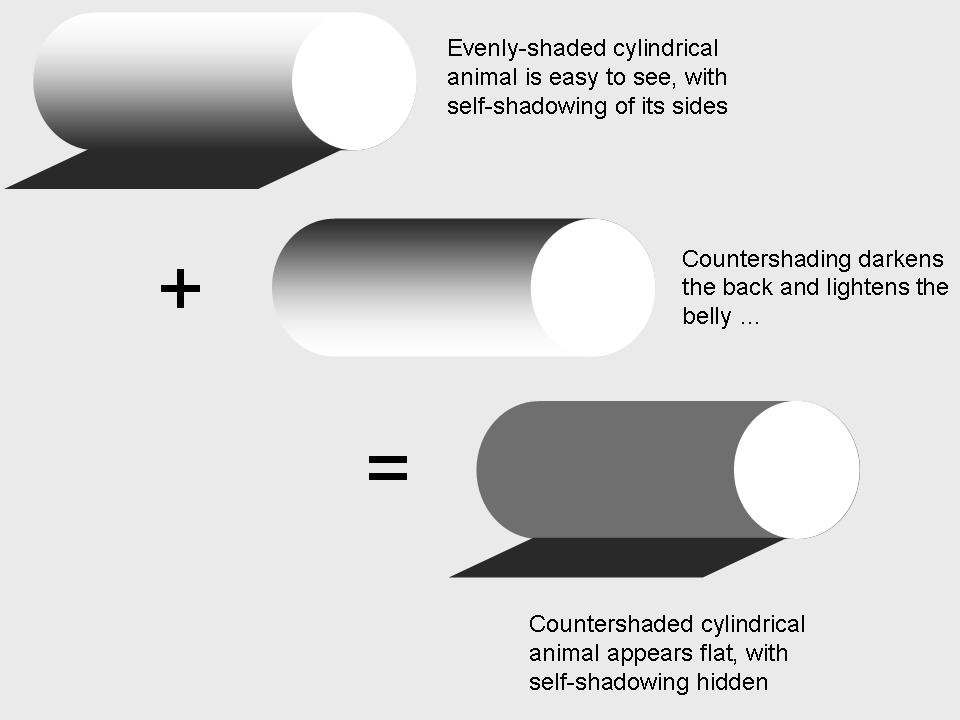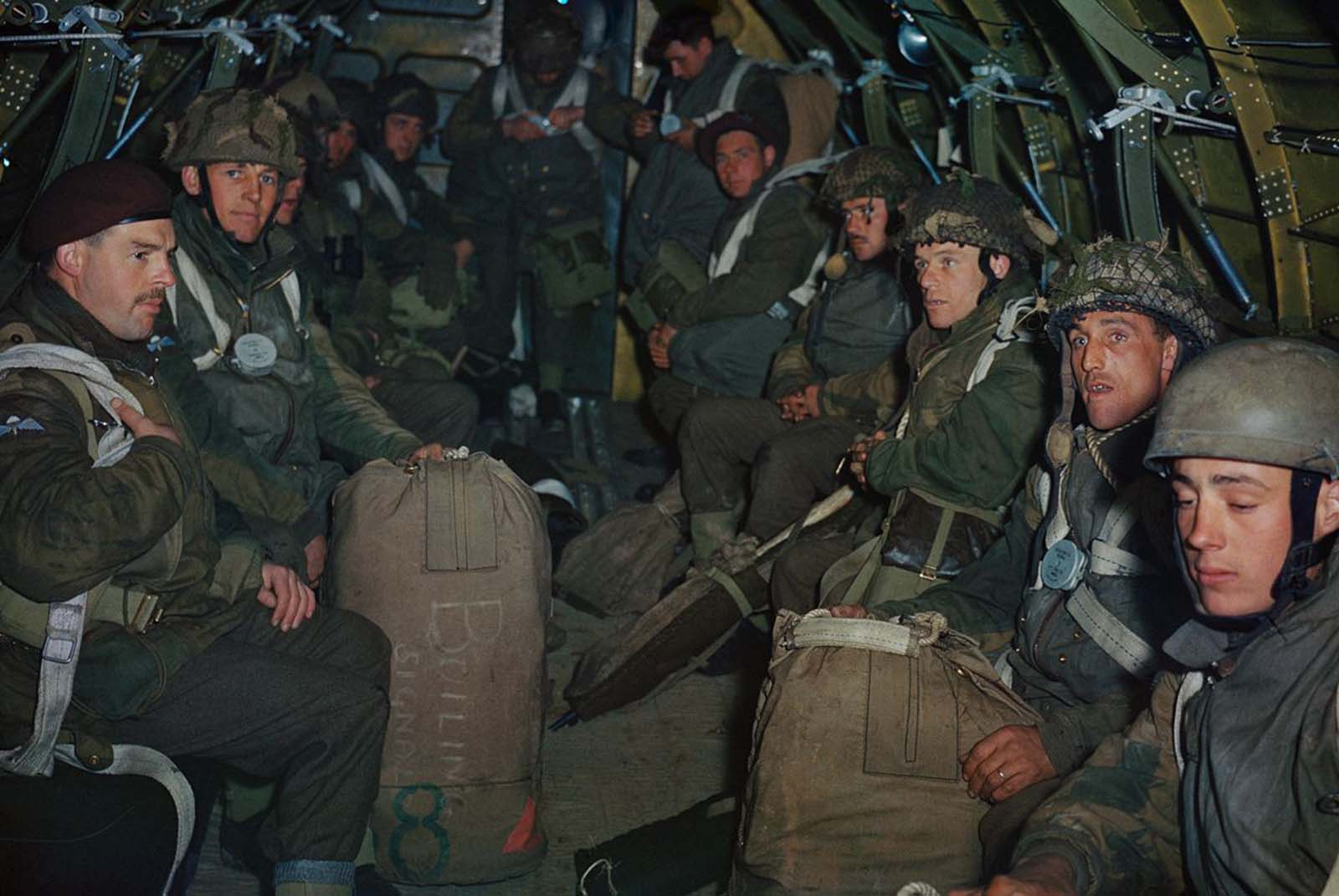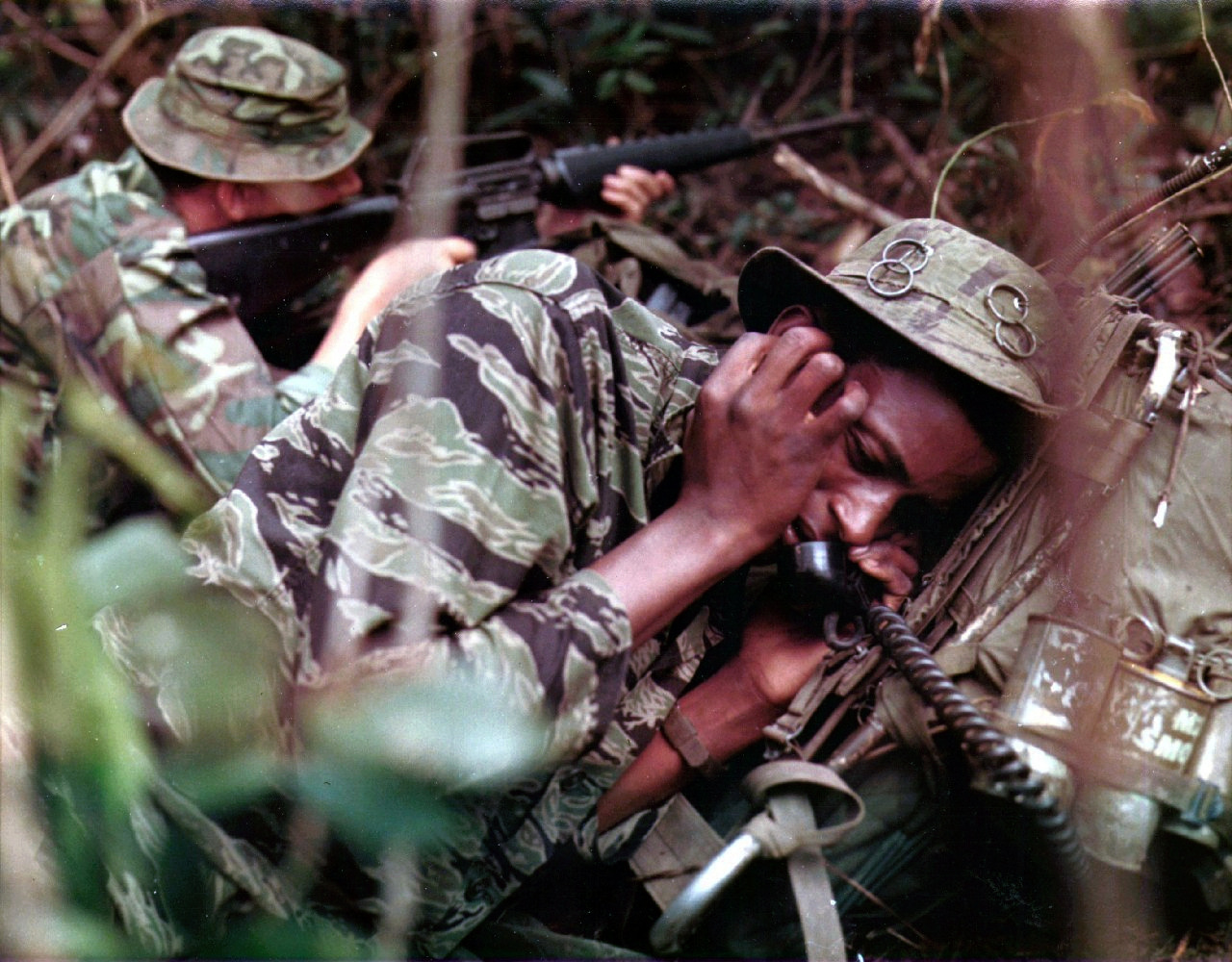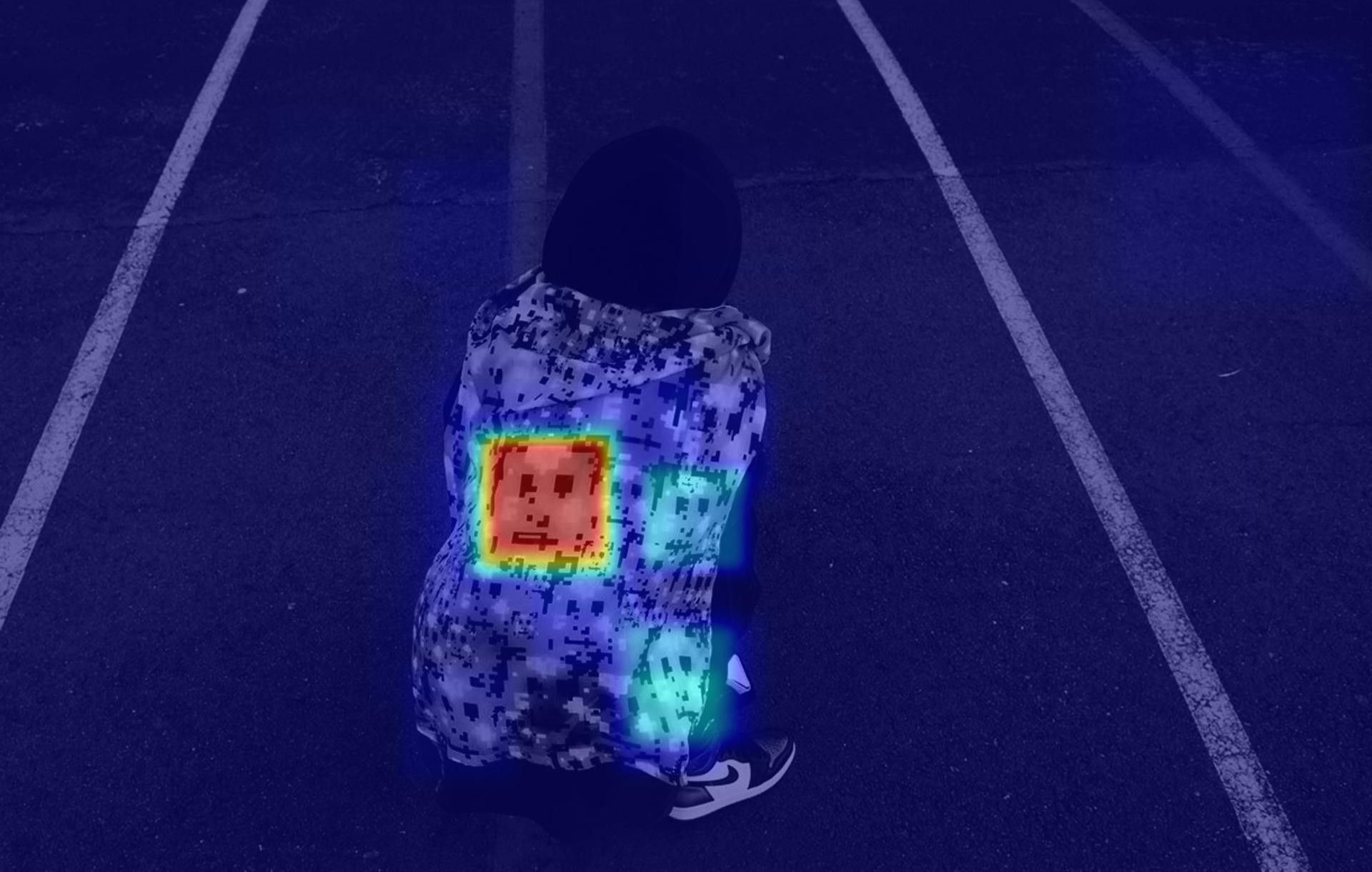Issue 10: Ecoscope
Wearing the Gaze
 Image by Feng Yongbin / China Daily
Image by Feng Yongbin / China Daily
When we speak of camouflage, we might first think of a mottled green pattern. We might imagine a chameleon’s charade, or a flounder laid flush against the pebbly ocean floor. We might even conjure the image of our younger selves, dressed uncharacteristically just to fit in. Camouflage takes many forms, but each one conveys the same self-awareness: I know I am being watched.
The nature of our disguises is always contingent on how we are watched. Depending on the gaze that follows us, it could be our distinct coloring that gives us away, or our movements against a still backdrop. It could even be the radiation of body heat, invisible to our own eyes but detectable by our adversaries. In this regard, camouflage is an unspoken acknowledgment of the rivalry between the wearer and the watcher. It is an artifact of antagonism itself, embedded into our skin, pelts, and chromatophores.
As the definition of camouflage expands, it is less beholden to its quintessential forms. Today, it can look like a group of fractals, or the absence of exhalation. Technology has widened our range of vision and sharpened our optical illusions such that the background has become virtually irrelevant. Performance studies scholar Laura Levin frames camouflage as “a psychic and morphological process of negotiating self (figure) in relation to an external visual field (ground)”. When we understand camouflage as a performance strategy, the ground in question assumes many modalities, from social norms to political subtexts, from one’s species to one’s aliveness. These modalities are the latest concern for today’s theorists, who are troubled with the task of imagining how camouflage—against all definitions of ground—takes shape in an increasingly digital, multi-modal world. The editors of Camouflage cultures: beyond the art of disappearance ask:
How does the 21st-century ‘camouflagist’ mask contingent relationships in an era that seems to be less about static objects and more about dynamic systems and codes that shift through time and space?
Although the answer is still unfolding, this work offers thoughts to guide us closer. In the observations to follow, I examine how man-made camouflage has evolved, specifically in the context of war and civilian surveillance, under an increasingly cyborg gaze and against an increasingly unstable backdrop or ground. While the histories within are abbreviated, they invite us to critically consider the new technologies we bring into the world amidst an ongoing arms race between the seer and the seen.
The science of camouflage is revealed by the gaze. Animals and plants don’t simply replicate their surroundings; they hack the perception of their predators through shape, color, and texture. Naturalist and artist Abbott Thayer, who is deemed the father of camouflage, was one of the first to realize the sophistication behind nature’s technique. He first encountered a phenomenon called countershading in the early 20th century while painting woodland animals. These animals, he noticed, tend to have darkly-colored upper or back sides and lightly-colored under sides. When sunlight fell on their backs (or their undersides, in the case of the Luna moth caterpillar that feeds upside-down), the animals’ silhouettes were nearly indistinguishable from their backgrounds.
 Countershading demonstration (source: Wikimedia Commons)
Countershading demonstration (source: Wikimedia Commons)
Countershading, also known as Thayer’s Law, was later deployed by the U.S. Navy in WWII to make aircrafts effectively invisible to German U-boats. Indeed, war has been a major impetus behind the advancement of man’s ability to see, which, in turn, has advanced camouflage technology. It was only when long-range firearms emerged in the 19th century that infantrymen began dressing in shades of green and gray on the frontlines. WWI introduced aerial reconnaissance and longer-range naval guns to the battlegrounds, alerting military leaders to the need to conceal their more spatially vulnerable equipment. Working with camoufleurs, or army-employed camouflage artists, the U.S. Navy painted its ships in broad, asymmetric stripes that did not invisibilize the vessels but made them less discernible to enemies squinting down a periscope. However, this method of disruptive patterning, dubbed dazzle camouflage, produced questionable results.
In WWII, as adversarial surveillance intensified in all directions, patterned camouflage became the standard outfit for soldiers, vehicles, armaments, and buildings alike. Camo was printed wholesale onto compromised surfaces, each nation donning a distinct texture. British paratroopers wore a brushstroke pattern to disguise themselves against woodland terrain. In the subsequent Vietnam War, Vietnamese and American forces sported a tiger stripe pattern to blend in with the jungle thicket. All the while, binoculars and sniper scopes scanned their backs.
 Colorized photo of British paratroopers preparing for a practice jump. 1944 (source: The Second World War in Colour via RareHistoricalPhotos.com)
Colorized photo of British paratroopers preparing for a practice jump. 1944 (source: The Second World War in Colour via RareHistoricalPhotos.com)
 Tigerstripe uniform on a US soldier in Vietnam. Circa 1969. (source: Wikimedia Commons)
Tigerstripe uniform on a US soldier in Vietnam. Circa 1969. (source: Wikimedia Commons)
Due to its exclusive use by the armed forces, camouflage quickly became a visual shorthand for warfare. In the 1960s and 70s, anti-war protestors exploited this metaphor by adopting the vestments of returning Vietnam War veterans. This not only expanded the symbolism of camouflage to one of “punk” subversion, but it also transferred the existing connotations of the print—authority, dominance, and coercion—to the new wearers. The symbolism of camo has since been diluted by decades of mass distribution. The mottled green print has been the uniform of anti-establishment subcultures on opposite ends of the political spectrum. It has lent a quality of toughness to haute couture and hip-hop. It is both jingoistic regalia and the layman’s getup. As it stands, camo connotes many ideologies and consequently none in particular.
The newest iterations of camo print expand the subtext even further with their computerized look. Digital camouflage was studied as early as the 1970s, when the U.S. Military Academy’s engineering-psychology program designed the Universal Camouflage Print (UCP) to make large equipment less detectable while in motion. UCP and comparable patterns like CADPAT and MARCAT are defined by their dual-texture: a micro-pattern of randomized, pixel-like squares forms a macro-pattern of similarly-colored swaths. The macro-pattern in turn resembles fractals, which our eyes register as a visual “white noise” and thus ignore the wearer.
 Temperate woodland CADPAT print (source: Wikimedia Commons)
Temperate woodland CADPAT print (source: Wikimedia Commons)
By bearing the likeness of the digital world, this latest generation of camouflage modernizes the institutions it clothes. Communication studies scholar and former U.S. Army soldier Richard Stowell describes the pattern as conveying a “rhetoric of high technology, implying speed, connectivity, innovation and creativity.” In a rhetorical sense, not only does the camouflage uniform act as an ideological apparatus that reinforces the U.S. Army’s ethics and culture, but the pixelation also projects a quality of being “high tech”. This branding became necessary after active conscription ended in 1973, shortly after the last American troops left Vietnam. Tasked with rallying an all-volunteer force for the first time, the Army began to market itself to the young American public as a place for building values, self-improvement, and even fun.
Recalling the contributions of Thayer and the camoufleurs, artists have traditionally been the theorists and designers of camouflage. They relied on live observations of mimicry to inform their spots, blots, and smears. Dual-textured or digital camo breaks the tradition, as it was developed by computers “as a relatively simple linear programming technique.” These generative patterns are but a facsimile of nature’s visual complexity, an attempt at the alleged randomness of nature. At the same time, the pattern purports to have no subject. To the predatory eye scanning the landscape for lifeforms, it is a representation of nothingness.
With each new development in camouflage, we abstract further from our environs. Instead, we look straight into the eye of the presumed “enemy” to determine our next move. The onset of infrared vision rendered our disguises moot, so scientists developed wearable thermal camouflage. The first attempt at a universal camouflage pattern sunk the U.S. Army back $5 billion. A Canadian company, Hyperstealth Biotechnology, invented a material that bends light to invisibilize its rear contents. And so the arms race continues, the upper hand oscillating between the perceiver and the perceived, one side’s progress inspiring the other’s.
As Foucault’s boomerang foretold, the same seeing mechanisms used by imperial forces abroad soon returned to domestic terrain. Today, biometric signals don’t just compromise the lives of those in active duty; civilians, too, now mask their own signs of life. In areas of Europe like the Franco-Italian and Hungarian-Serbian borders, patrols are equipped with drones, thermal cameras, and heartbeat radars. Similar thermal vision devices line the train tracks of Brussels and the highways of Calais, while their guards wield CO2 detectors that detect bodies readily during vehicle inspections. In these conspicuous zones, sight technologies answer one binary question: is there life where life is not permitted? Other tools aim to make bodies legible so that they can be qualified as desirable or undesirable. The US, France, and soon the UK use x-ray bone, hair, dental, and genital tests to verify the minority status of young migrants before deciding their fates. When mediated by technology, these processes of exclusion assume a scientific quality that makes them appear more justified.
Social and political philosophy scholar Hourya Bentouhami recounts “life strikes” carried out by the migrants who traverse European borders. Rather than tampering with the surveillance systems themselves, the migrants direct their resistance inward, toward the sole realm that is reliably under their control—the body. Faced with an array of new gazes, migrants have invented new ways to hide, such as “hunger strike[s], holding one’s breath, burning one’s fingertips, sewing the mouth or eyelids shut.” Bentouhami calls this practice “devitalization, a way of turning life against itself”. This is a notable departure from typical manmade guises, which subordinate the self to surrounding tableaus. Instead, the ground which these migrants perform is the inverse of what they are: alive, individualized, and originated from somewhere.
Turning to measures against quotidian surveillance, we see that these tend to be directed at the self as well, but to a fault. A common technique is wearables, like eyeglasses or jewelry, that deflect human or face recognition systems using infrared light, reflective materials, patterns, and shapes. Similarly, 2010 ITP alum Adam Harvey’s CV Dazzle uses various permutations of makeup and hairstyles to block face detection and thereby “prevent further analysis by face recognition.” Others, still, attempt to overload data mongers, rather than resist their detection. Kate Rose’s satirical license plates and Adam Harvey and Hyphen-Labs’ “face”-patterned textile are some examples.
 Face-like assemblages distract algorithms from noticing actual human faces (source: Adam Harvey)
Face-like assemblages distract algorithms from noticing actual human faces (source: Adam Harvey)
These artistic interventions get press for their novelty, but are still effectively powerless against the black-boxed infrastructure of today’s ambient surveillance. Their efficacy is largely untested outside of rote experiments with neural networks. Communication studies scholar Torin Monahan calls anti-surveillance art an “aestheticization of resistance” that distracts from “blind spots, specifically where issues of racial identity, difference, and power are concerned.” Gender, Disability, and Technology scholar Os Keyes draws attention to one such blind spot: though we may gain anonymity against algorithms by donning loud patterns and avant-garde makeup, in turn we become more noticeable to humans. Considering there are a host of humans behind surveillance systems (i.e. CCTV operators, law enforcement), dressing conspicuously can have potentially dire consequences, especially for people who are already hyper-visible to the disciplinary gaze.
For Keyes, the anti-surveillance solutions to date are individualized and over-promising. Indeed, the focus on individual performers weakens these tactics’ staying power in culture. Their ephemerality is furthered by the fact that they are usually designed to manipulate one specific algorithm. CV Dazzle was originally made to target the Viola-Jones algorithm, which has since been joined by hundreds of new formulas for face detection and recognition. On CV Dazzle’s website, an update from two years ago warns that the original designs would not fool the deep convolutional neural networks (DCNNs) that are standard in facial surveillance technologies today. This is precisely the paradigm shift described by the editors of Camouflage cultures, in which camouflagers must adapt to a gaze that does not rely on static or visual backgrounds, a gaze which never sees the same way twice.
We may even have to become the seer ourselves in order to understand what parts of ourselves we must negate to survive. In the face of an inordinately powerful gaze, perhaps the only way to retain one’s humanity is to make it illegible, as life-strikers have done.
There is much to negotiate before we reach a panacea for civilian surveillance. As was the case for camo uniforms, it is possible that we may end up co-opting the latest military technologies for our own protection. It is also possible that wearable disguises will become a widespread sartorial practice if new iterations are designed to evade both human and algorithmic purview. We may even have to become the seer ourselves in order to understand what parts of ourselves we must negate to survive. In the face of an inordinately powerful gaze, perhaps the only way to retain one’s humanity is to make it illegible, as life-strikers have done.
We may even have to become the seer ourselves in order to understand what parts of ourselves we must negate to survive. In the face of an inordinately powerful gaze, perhaps the only way to retain one’s humanity is to make it illegible, as life-strikers have done. 1
To camouflage oneself is to participate in an economy of symbols that slide greasily between the seer and the seen. So hazy are the boundaries between the two that it seems potentially reconciliatory—the defender and aggressor evolve in lockstep until they begin to resemble each other and eventually nullify the antagonism between them. But this fantasy goes unverified by nature, our perennial, shapeshifting teacher. If anything, the generations of coevolution between flora, fauna, fungi, and microorganisms show us that camouflage is an ongoing dialectic. It is a practice of recreating the truth to exploit another’s subjectivity. It is an iterative, self-perfecting process. It is the slim overlap between the powerful and the powerless, and the line between them is drawn by one question: do you seek to annihilate yourself, or to annihilate the other?
Pulling the slingshot back for the next breakthrough, I will end on a plea from Keyes:
What we need is not individualized forms of resistance that work only for those people with the fewest reasons to worry in the first place. What we need is a plurality and diversity of tactics, actions and organizations, at street level, in legislative hearings, in protests, that exist within an ecology of resistance. That is, interventions should be clearly recognized as mutually reinforcing, mutually shaping, and made up of a million people working not on their own but in collectives, communities, together. 2
